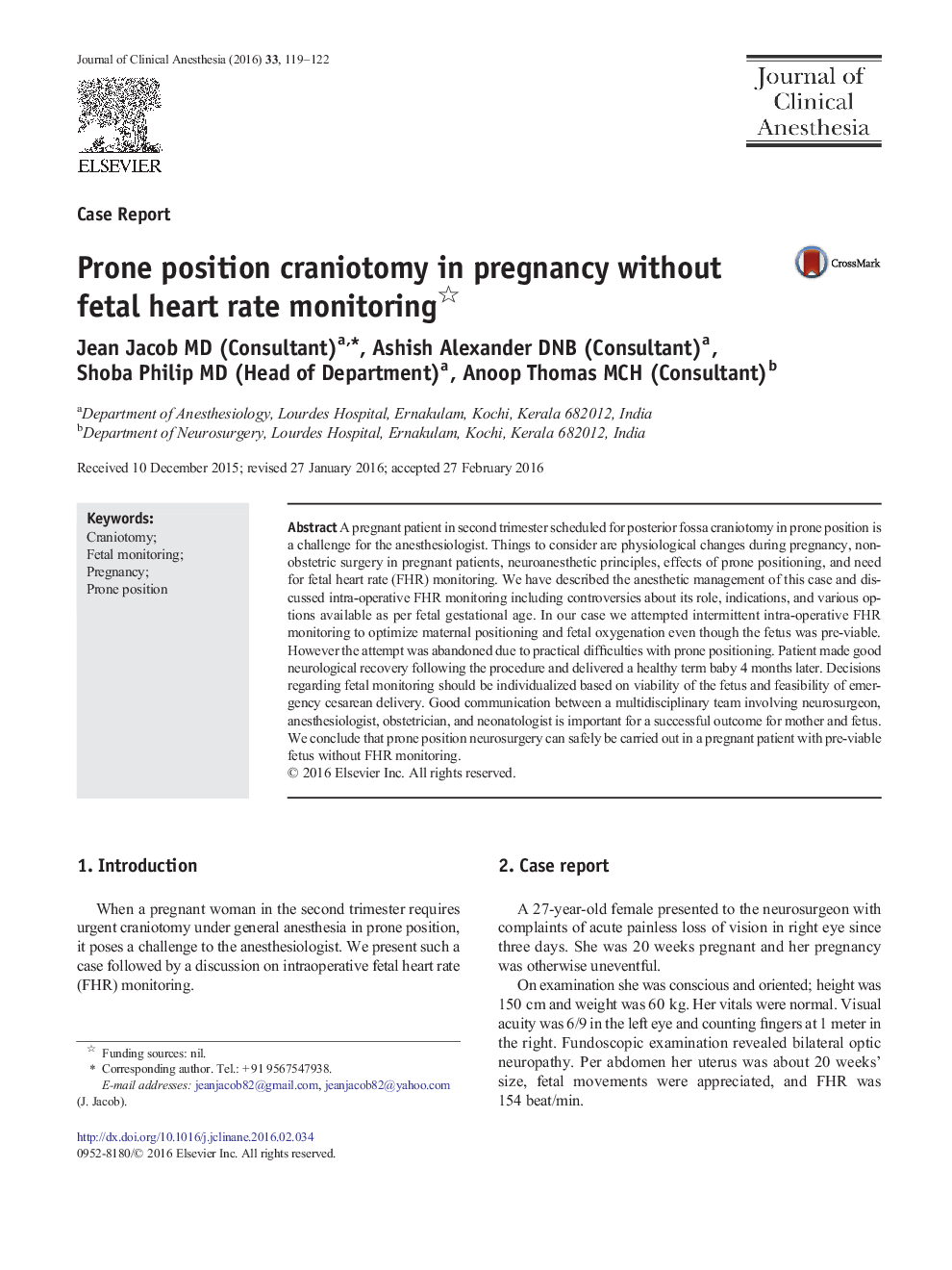| Article ID | Journal | Published Year | Pages | File Type |
|---|---|---|---|---|
| 2762141 | Journal of Clinical Anesthesia | 2016 | 4 Pages |
•We present the case of a 5-month-pregnant woman for craniotomy in prone position.•Use of intraoperative fetal heart rate monitoring for non-obstetric surgery is controversial.•Monitoring can be done on pre-viable fetus to optimize maternal positioning and fetal oxygenation.•In our case, attempts at fetal monitoring were unsuccessful due to problems with prone positioning.•Patient made good recovery after surgery and delivered a healthy term baby four months later.
A pregnant patient in second trimester scheduled for posterior fossa craniotomy in prone position is a challenge for the anesthesiologist. Things to consider are physiological changes during pregnancy, non-obstetric surgery in pregnant patients, neuroanesthetic principles, effects of prone positioning, and need for fetal heart rate (FHR) monitoring. We have described the anesthetic management of this case and discussed intra-operative FHR monitoring including controversies about its role, indications, and various options available as per fetal gestational age. In our case we attempted intermittent intra-operative FHR monitoring to optimize maternal positioning and fetal oxygenation even though the fetus was pre-viable. However the attempt was abandoned due to practical difficulties with prone positioning. Patient made good neurological recovery following the procedure and delivered a healthy term baby 4 months later. Decisions regarding fetal monitoring should be individualized based on viability of the fetus and feasibility of emergency cesarean delivery. Good communication between a multidisciplinary team involving neurosurgeon, anesthesiologist, obstetrician, and neonatologist is important for a successful outcome for mother and fetus. We conclude that prone position neurosurgery can safely be carried out in a pregnant patient with pre-viable fetus without FHR monitoring.
